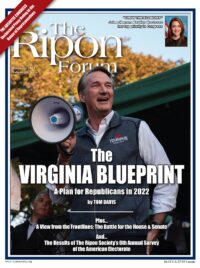
Elections in 2021 accentuated the growing popularity and success of Ranked Choice Voting (RCV), which allows voters to rank their preferences among candidates rather than being restricted to selecting just one.
The success story began with New York City’s RCV Primary Elections, along with 32 cities in seven states which used RCV in November. It also included the passage of three city ballot measures to adopt RCV elections for the future. There are additional success stories in other jurisdictions for elections in 2022 and 2024. The bottom line is that Ranked Choice Voting is a viable voting method and has benefits over a winner-take-all voting method.
The Ranked Choice Voting Resource Center is a 501(c)(3) non-profit specializing in education, training, and research of RCV for election officials, policymakers, candidates, voters, other stakeholders, and the general public. Our website contains a wealth of information, including a model implementation plan, all laws pertaining to RCV, RCV Maps detailing every state’s readiness to administer RCV elections, a collection of best practices, podcasts, webinars, and a library of helpful RCV materials.
With multiple candidates, RCV provides common ground where voters can agree if their first choice does not win but a subsequent vote goes to a winning candidate.
From our beginning to present, a majority of our staff have a connection to RCV election administration at the local and state levels. In addition, we have former educators and legislative assistants. In developing a solid foundation, we concentrated on infrastructure needs. We pride ourselves in helping policy makers and election administrators to facilitate the smooth adoption and implementation of ranked choice voting.
One of the first goals we undertook was to establish a relationship with voting equipment manufacturers and vendors. Their voting systems lacked basic RCV tabulation capability and had limited ballot layout options. The market was very limited, and most vendors felt they could not justify the cost of developing these capabilities. Without tabulation capability, however, the market could not develop so we took on this challenge.
Tabulating RCV results to determine winners and visualization of results was a labor and time intensive process. To accomplish this, we received volunteer help from a group of excellent software developers who produced two useful tools – RCTab and RCVis. RCTab uses cast vote records (an electronic record of each ballot) to tally round-by-round results until there is a winner. RCVis is a visualizer to display election results. Both were used by numerous jurisdictions in 2021 RCV elections.
Another groundbreaking effort by two staff members is the work during the last five years with NIST’s Voluntary Voting Systems Guidelines (VVSG) Voting Methods Working Group. The Group has identified RCV standards for voting equipment vendors, and for Legislators and stakeholders who need to know there are defined standards for developing RCV procedures. Staff is drafting a report of their work and its importance to be issued in early 2022.
With assistance from the Center For Civic Design, RCV usability studies have been conducted researching voter preferences and feedback including ballot styles, layout, and instructions. Additional studies include UOCAVA (Uniform and Overseas Citizens Absentee Voting Act) voters and voters with disabilities.
More voters have a voice in who wins, and winning candidates have a broader base of voter support when they begin serving and governing.
One high level finding is that voters successfully ranked six or more choices without confusion or voter fatigue. Also, most ballot styles appear to work when simple, clear voting instructions were provided. And while ranking is not a problem, understanding round-by-round tabulation until there is a winner needs explaining. Voters responded well to a one-page fact sheet explaining ranking and round-by-round tabulation. Due to the time, distance, and ballot access issues with UOCAVA voters, RCV offers promising improvements for voting by UOCAVA voters, especially where primaries and runoffs are employed. Voters with disabilities did extremely well with few issues. Their experience was similar to those who do not have a known disability.
Who benefits the most from RCV? The voter and democracy! Jurisdictions which have primaries, elections, and run-offs see participation dwindle and added expense. With multiple candidates, RCV provides common ground where voters can agree if their first choice does not win but a subsequent vote goes to a winning candidate. More voters have a voice in who wins, and winning candidates have a broader base of voter support when they begin serving and governing.
While there is no perfect voting method, RCV offers documented advantages over single choice voting. The Ranked Choice Voting Resource Center is working hard to make RCV the best experience for voters and those who govern to the benefit of our democracy.
Gary Bartlett serves as Executive Director of the Ranked Choice Voting Resource Center. He previously served as Executive Director of the North Carolina Board of Elections for 20 years.




